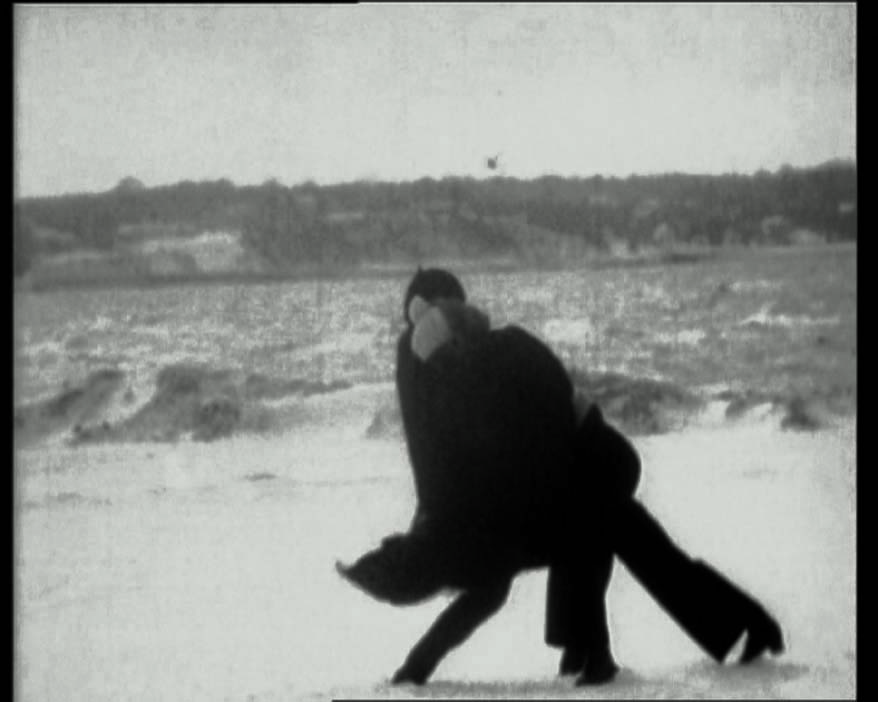Loop Festival: «Wind» and «Songdelay». Joan Jonas

Information
Days: 11th–23rd November, 2025
Hours: Tuesday to Sunday, from 10 am to 7 pm
Place: Neoclassical Hall, Museu Picasso. Access via Montcada Street, 17
Price: Included with Museum admission. Free entry with Loop Festival accreditation
Bookings
No prior booking required. Free admission, limited capacity
Once again, the Picasso Museum collaborates in this year's edition of the Loop Festival. Under the title Miratges Mirages, the festival unites multiple projects to highlight how moving images create special visions and encounters. A mirage is often described as something negative: an illusion, a dangerous perspective, a powerful attracting force. Yet a mirage is also an artistic phenomenon: films and books, both for children and adults, often picture it as something magical that appears in times of need. The 2025 edition of Loop Festival views the mirage as images of something desired, which appear to us, even if only for fleeting moments, to bring joy, energy, trust, and enthusiasm.
Wind and Songdelay
For over five decades, artist Joan Jonas (NY, 1936) has shaped contemporary art through a rare disciplinary elasticity, expressed in her performances (often involving her own presence, alone or alongside others), drawings, sculptures (frequently with abstract, geometric references), environments, and video installations (which bring together all these elements, as well as objects, props, and complex display systems). In recent years, her concerns about the environmental crisis have made her a leading voice for our present times of ecological unrest. Yet this engagement with nature—both in the concreteness of its phenomena and in the ways it can be represented, narrated, and portrayed—as well as the political and social dimensions of her practice, has been present throughout her career. Two early iconic works, Wind (1968) and Songdelay (1973), demonstrate this.
In Wind, Jonas and a group of performers carry out repetitive, almost futile actions in a wintry, windswept landscape. The hostile natural environment interacts with the choreographed movements of the performers. The work suggests a tension between human agency and the forces of nature, evoking aspects of environmental struggle (the performers are diminished and challenged by the elements); social structures (the use of uniforms and masks suggests depersonalisation and conformity, possibly as a critique of bureaucracies or militarisation); and feminist subtexts (offering an essential counterpoint to the dominant masculinity in the arts of the period).
In Songdelay, the action shifts from an empty beach to an urban environment, where Jonas plays with the temporal delays created by spatial distance. Performers use blocks and metal plates, evoking minimalist sculpture through a strong performative dimension. Fragmented communication and mechanical sounds highlight barriers to interpersonal connection in modern urban life, critiquing social alienation. While the work's formalist and conceptual character might appear apolitical, in its context—the years after 1968, the Vietnam War, and the second wave of feminism—the very act of claiming public space for experimental, non-commercial performance was, in itself, profoundly political.
A project by: Museu Picasso of Barcelona and Loop Festival, curated by Filipa Ramos
Filipa Ramos, PhD, is a writer and curator. Her practice-based research focuses on how contemporary art engages with nature and ecology. She is a professor at the Institute Art Gender Nature of the Basel Academy of Art and Design FHNW and the Artistic Director of Loop Festival in Barcelona, dedicated to promoting artists’ cinema.


